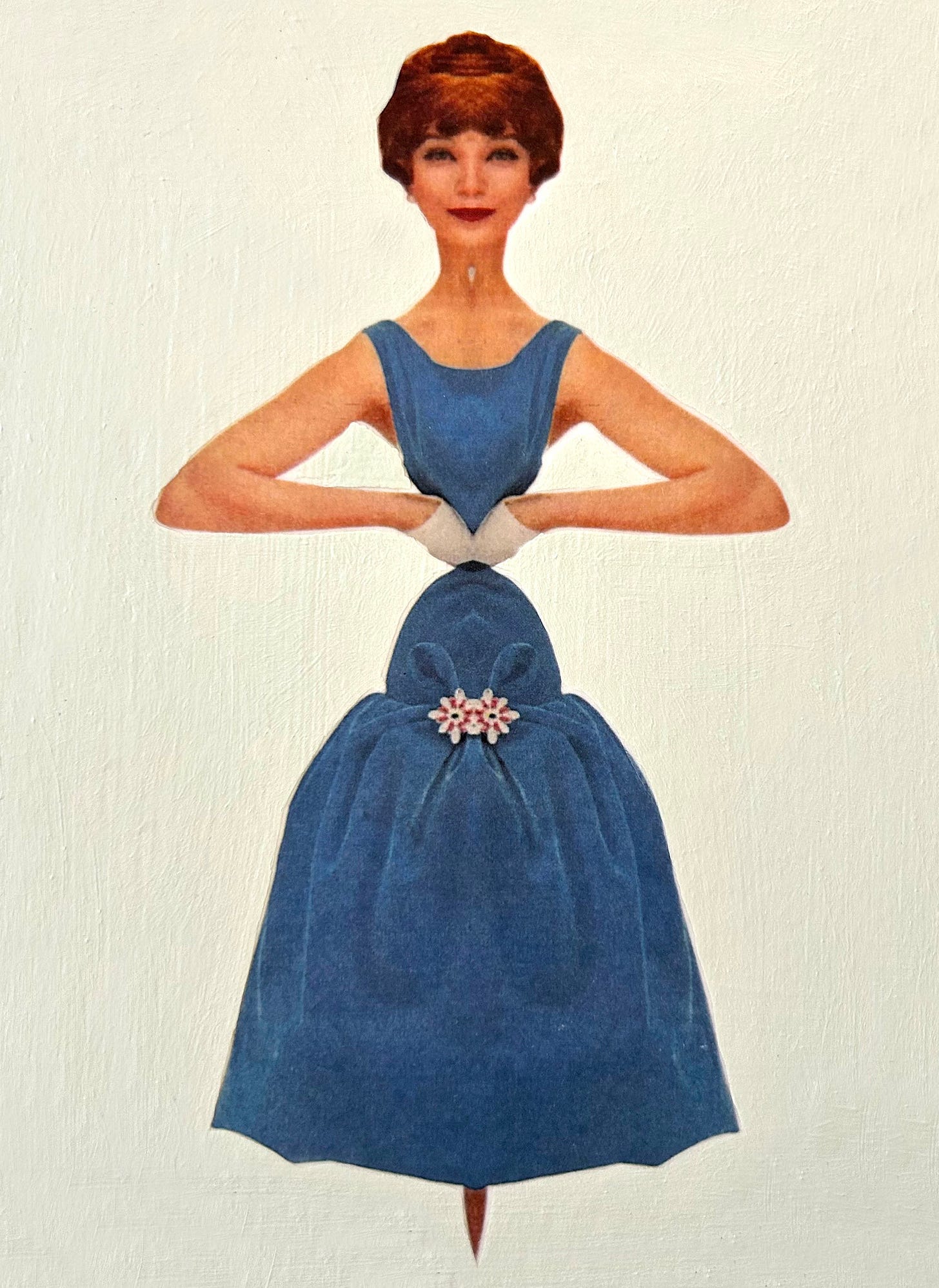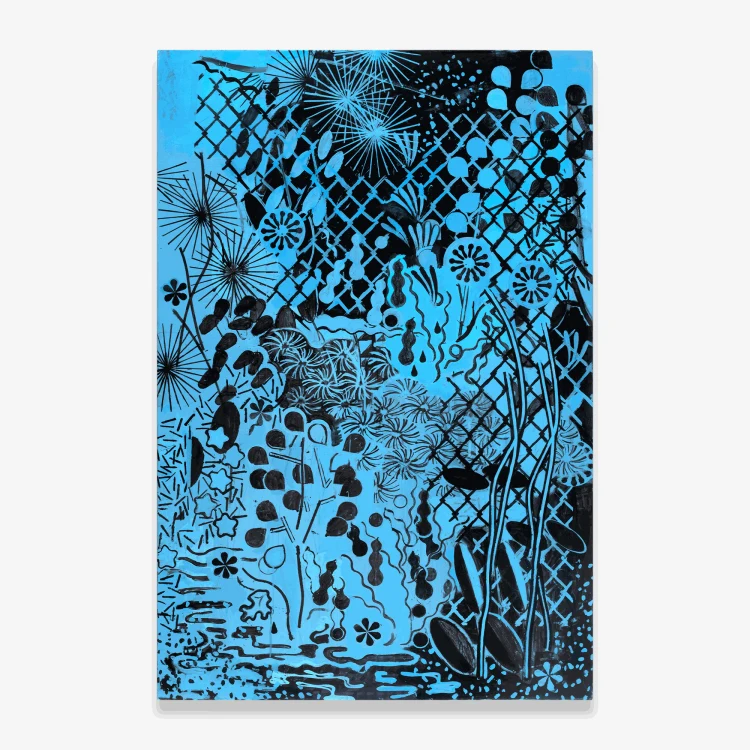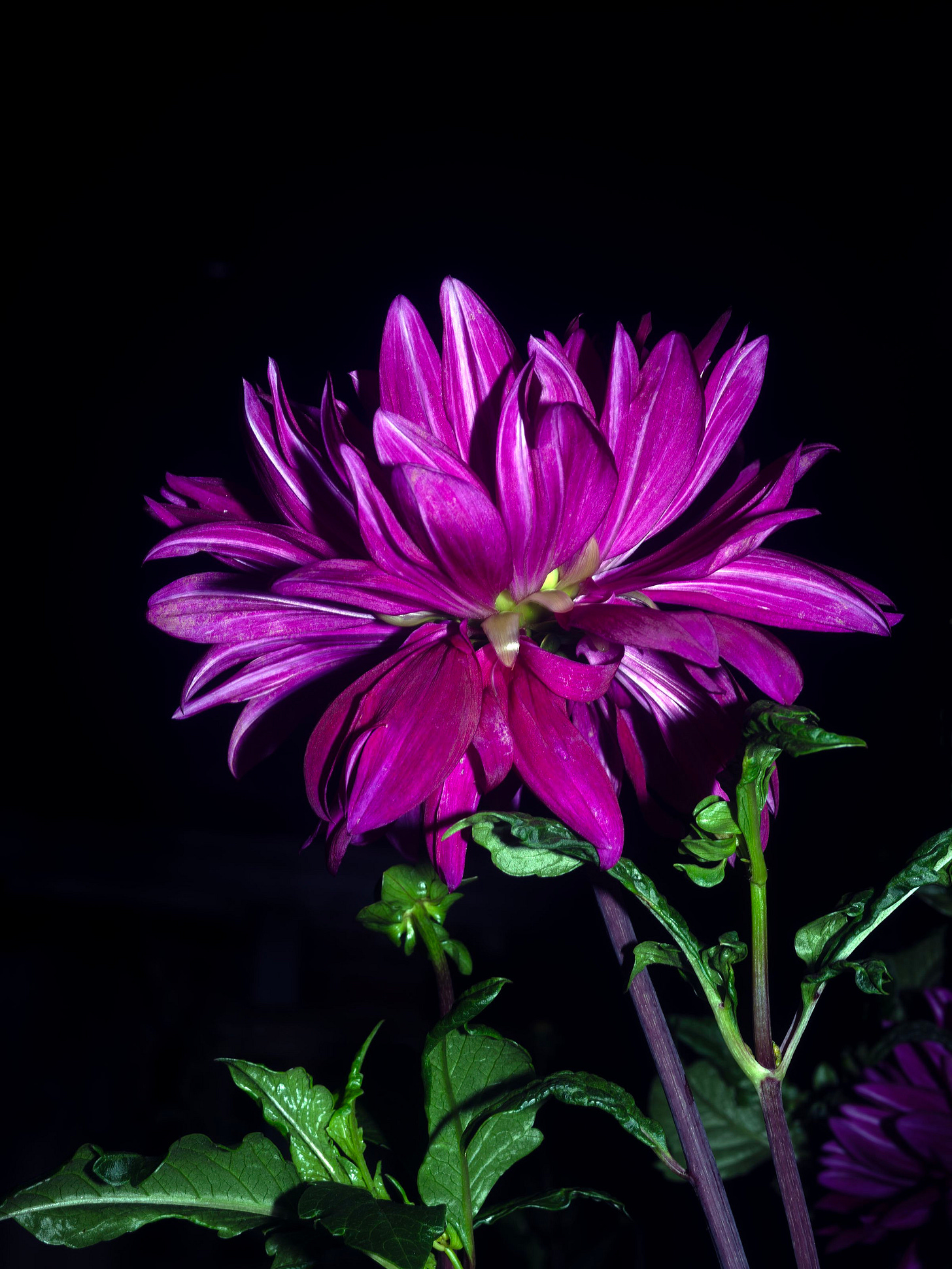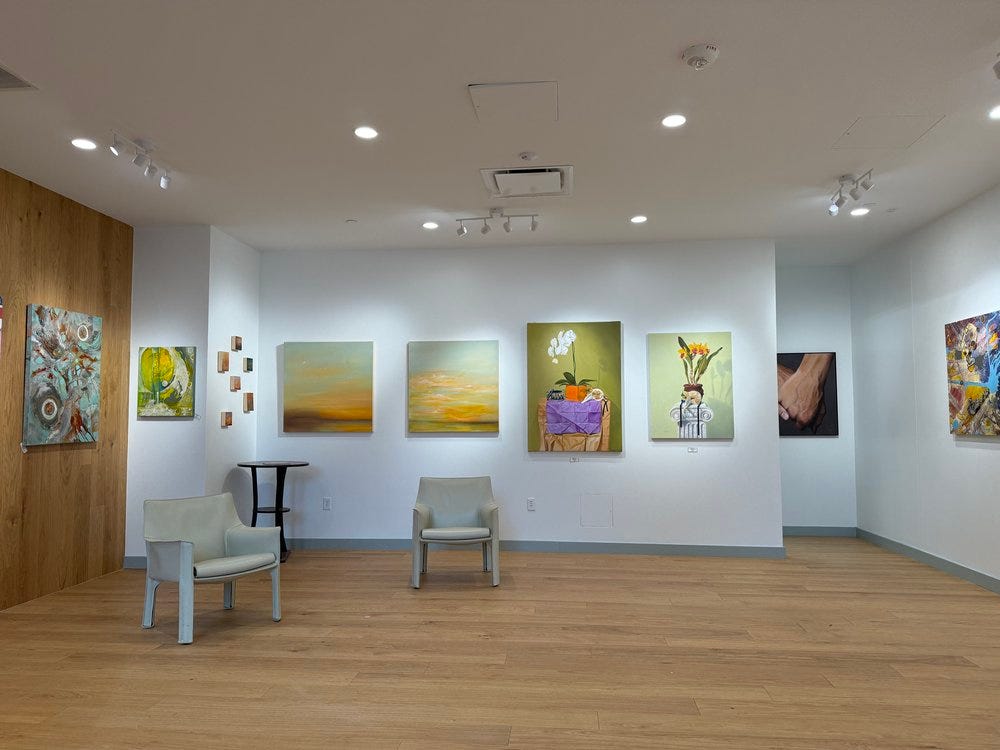Bodies of Work
Susan R. Johnson streamlines women from the bad old days; Brian Michael Dunn, E.E. Ikeler, Jennifer Sakai, and the artists of "Arc of Colors" let 100 flowers bloom
Susan R. Johnson, “The Curiouser No. 16” (Gallery Neptune & Brown)
SLEEK AND MACHINED, THE WOMEN OF SUSAN R. JOHNSON'S "Symmetrical Bodies" are idealized to the standards of an earlier era. The artist paints over digital collages made from what appear to be mid-20th-century American advertising and fashion images. The impeccably garbed creatures who promenade in the Gallery Neptune & Brown show are elegant but eerie.
Five years ago, Johnson's "Hall of Portraits from the History of Machines" filled a VisArts Gallery with entities amalgamated from women and such domestic devices as irons and sewing machines. The artist leaves such gadgets out of her newer work, but that doesn't mean the beings in her pictures now appear human. They're automatons, engineered from near-obsolete stereotypes rather than diodes and shaped metal. Most are small, but are printed on large banners, as to emphasize their origins in marketing campaigns.
Johnson teaches art at St. Mary's College of Maryland, so it's only to be expected that her work has art-historical grounding. Surrealist Max Ernst and Surrealist-adjacent conceptualist Marcel Duchamp are among the inspirations for her work. Of the three Johnson series excerpted in this show, one is "The Headless Woman," a reference to a Ernst collage novel whose title -- a pun in French -- is rendered in English as "The Hundred Headless Woman." In Johnson's conception, the women lack heads and often legs, but some have hands to clutch pairs of identical handbags or carrying cases.
Another series, "The Curiouser," takes its cues from Alice's Adventures in Wonderland. This venture through the looking glass yields the strangest of Johnson's mutations. Some are broadened unnaturally, as if by a funhouse mirror, and one is squeezed into a hourglass figure more extreme than even the most tyrannical corset could produce. To Johnson's hybrid women, societal control of their roles, appearances, and identities is inherently disfiguring.
Brian Michael Dunn, “Passage” (Pazo Fine Art)
THE WORLD IS A TEEMING BUT NOT QUITE RECOGNIZABLE GARDEN in the paintings of Brian Michael Dunn and E.E. Ikeler, who are exhibiting together in "Second Spring." The styles of the two artists are disparate yet compatible, to judge from their duo show at Pazo Fine Art's D.C. location. Both participants devise elaborate all-over pictures packed with janglingly competing motifs, cohesively composed if never symmetrical.
Dunn's eight paintings, made with vinyl acrylic, are dense and vivid, even when restricted to just two colors. The Takoma Park artist constructs crowded fields in large part from such elementary forms as dots, stars, triangles, and teardrops, which overlap intricately and unpredictably. A few canvases have dominating features, such as the web in "Spider and I," and many include bloom-like shapes that make such pictures as "Rust Belt" strongly suggestive of flower beds. Yet these are not paintings of actual things. Dunn abstracts real objects into pictorial devices that exist, and could only exist, within a painting.
Photographs of flowers are among the elements incorporated into Ikeler's pictures, which are more literally collaged than Dunn's. Absent in these mixed-media works is the headline-like text that was integral to some of the paintings in the Brooklynite's 2021 Hemphill Artworks show. But chunks of old English poetry are affixed to "Tis Folly to be Wise," the only one of the six paintings not held together by blue or a black background. And other pieces include stitched thread and button-like discs, some of them embellished with more flower photos. Unlike Dunn, Ikeler doesn't just simulate depth, but actually builds up layers of lines, circles, and images. Yet the effect of both artists's strategies are similar: to lead the eye into mini-universes that appear profuse and bottomless.
Jennifer Sakai, “Untitled No. 7331 (Fuchsia Dhalia)” (Addison/Ripley Fine Art)
JENNIFER SAKAI OFFERS A WAY OF LOOKING AT FLOWERS THAT APPEARS familiar, but isn't, exactly. The D.C. photographer's closeups of one or just a few blooms seem to emulate Dutch Old Master still lifes. Yet the pictures in Addison/Ripley Fine Art's "Summer Quarters" are not the studio creations they appear to be.
Unlike traditional still-life painters, Sakai doesn't pluck blossoms and pose them in front of a black backdrop. Her photos are of living plants, captured in the middle of the night in her own garden, which is painstakingly illuminated by spotlights. The artist's statement acknowledges artistic precedents, but these "metaphors for transformation, fragility, and human desire" are found, not manufactured.
The fragility is expressed partly by the presence of the occasional insect, there to consume rather than preserve the fragile petals and leaves. Yet such memento mori are upstaged by the vibrancy of the reds, yellows, and gently shadowed whites. The vivid fuchsia bloom and hot green leaves of a dahlia appear archetypal, destined to linger in the mind, and on paper, long after they wither in real life.
Installation view of “Arc of Colors” (Byrne Gallery)
FLOWERS DOMINATE BUT AREN'T THE ONLY ATTRACTION at "Arc of Colors: A Celebration of World Pride 2025," the seven-artist pop-up show organized by Middleburg's Byrne Gallery. (The temporary location is in City Ridge, the upper-Northwest development best known for its Wegman's supermarket.) Despite the occasion, the painting-heavy exhibition doesn't address any specifically LGBTQ themes. Most of the pictures are serenely realistic, although Joe LaMattina contributes a set of thickly pigmented, partly poured abstractions.
The floral portraitists are Thomas Wharton, who's also showing a nighttime mountainscape, and Craig Arnold. Flowers feature as well in the theatrical still lifes of Miguel Diaz, who paints arrangements of incongruous objects in a photorealist mode, and in a picture by Jeffrey Kibler, whose most striking entry is a large oil of two entwined hands.
The edgiest subjects are the domain of Regina Miele, who depicts urban views from Northeast Corridor trains in paint or charcoal. Miele also offers a large portrait of a woman -- a rare human presence -- and scenes of beaches and lakes that fit nicely with Anne Manley's studies of dramatic skies and clouds. Amid the mostly sunny hues, Manley's green-black firmaments are perhaps the show's most engrossing vistas.
Susan R. Johnson: Symmetrical Bodies
Through June 14 at Gallery Neptune & Brown, 1530 14th St. NW. galleryneptunebrown.com. 202-986-1200.
Brian Michael Dunn & E.E. Ikeler: Second Spring
Through June 7 at Pazo Fine Art, 1932 9th St. NW (entrance at 1917 9 1/2 St. NW). pazofineart.com. 571-315-5279.
Jennifer Sakai: Summer Quarters
Through June 7 at Addison/Ripley Fine Art, 1670 Wisconsin Ave. NW. addisonripleyfineart.com. 202-338-5180.
Arc of Colors: A Celebration of World Pride 2025
Through June 8 at Byrne Gallery pop-up, 17 Ridge Sq. NW. thebyrnegallery.com. 540-687-6986.






